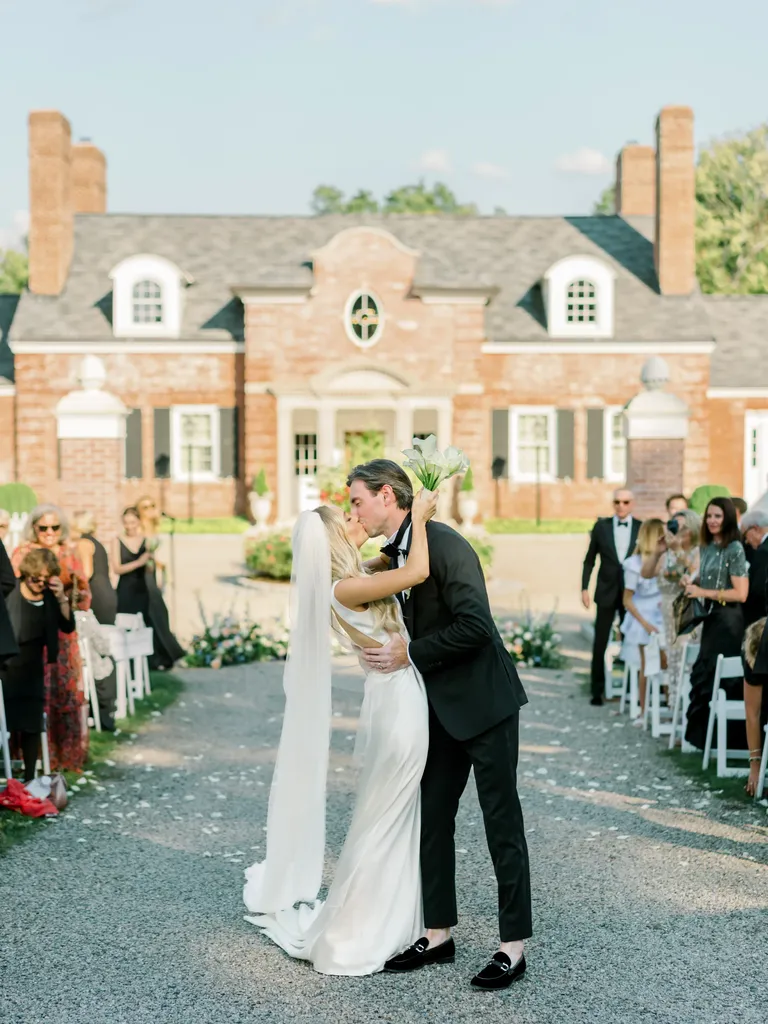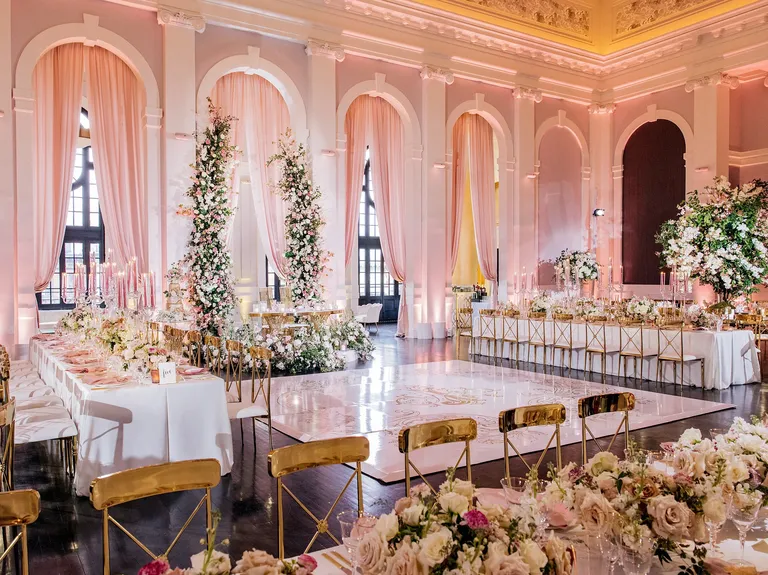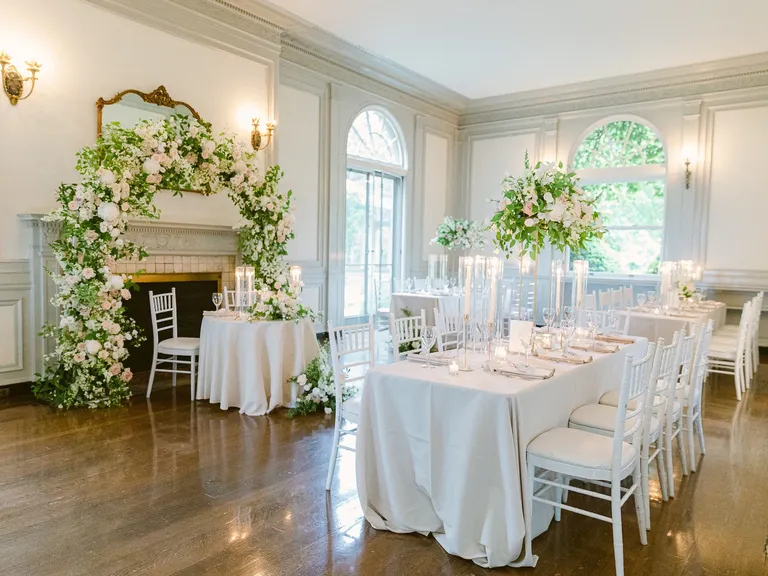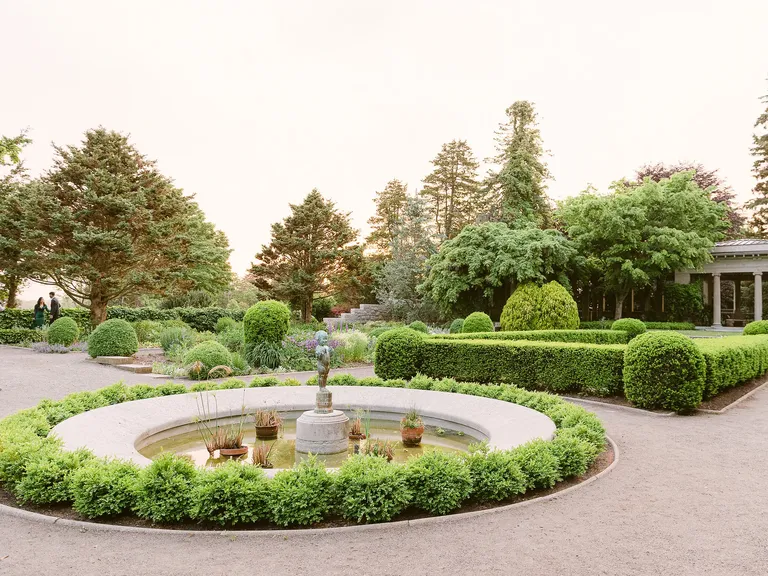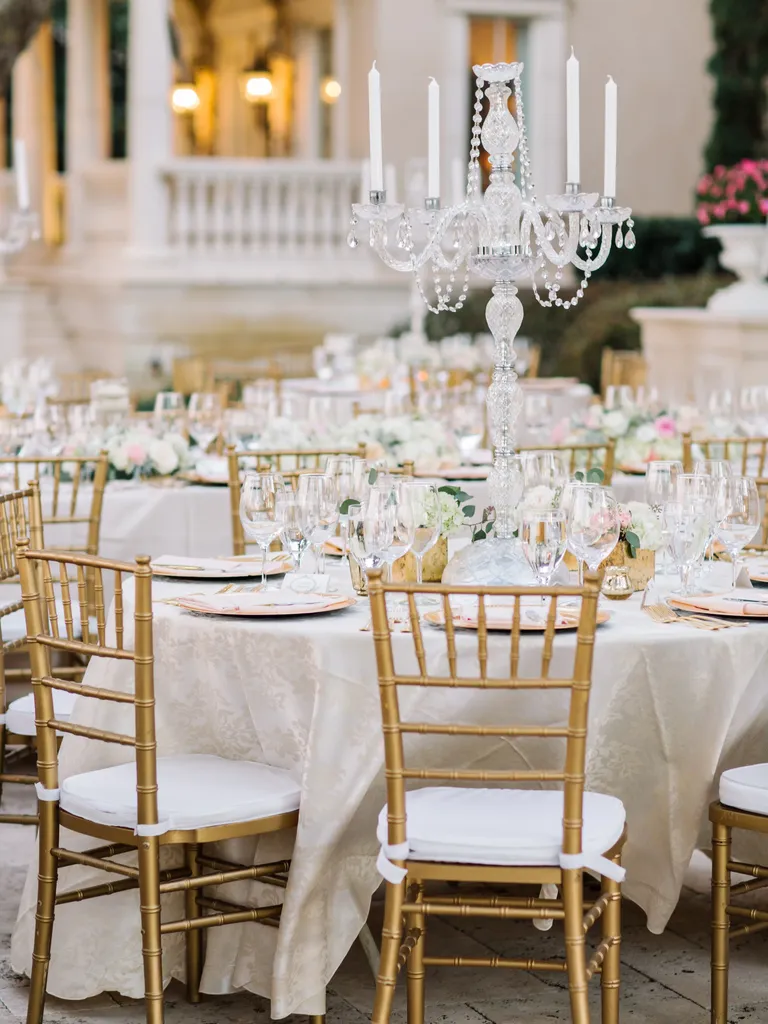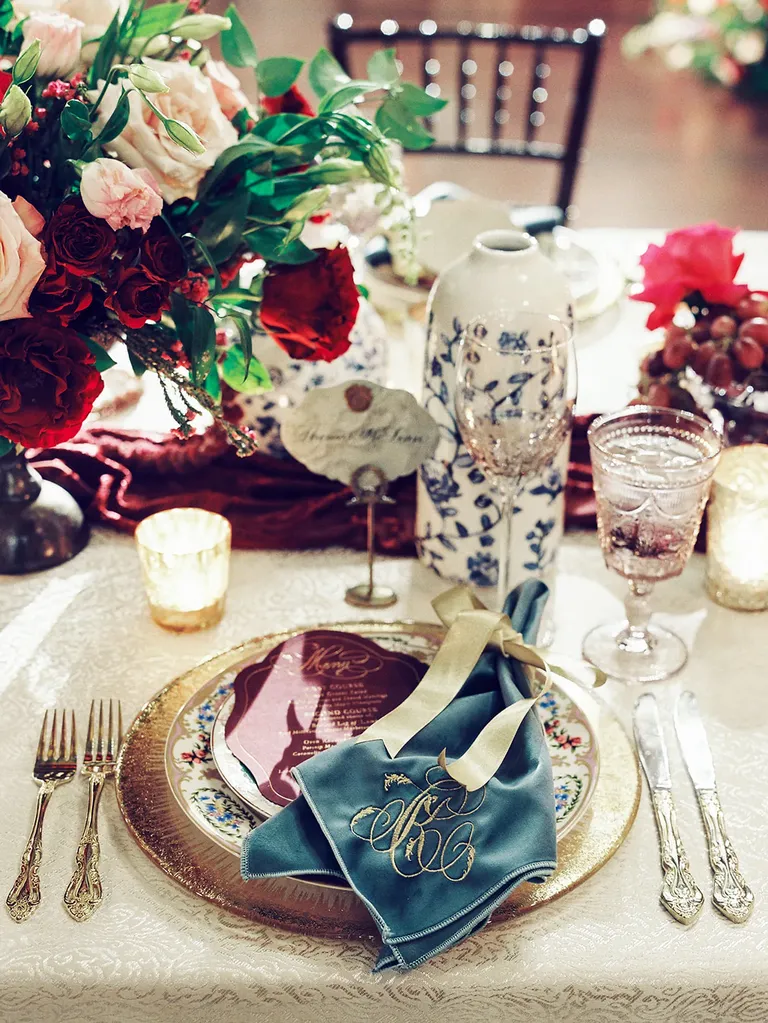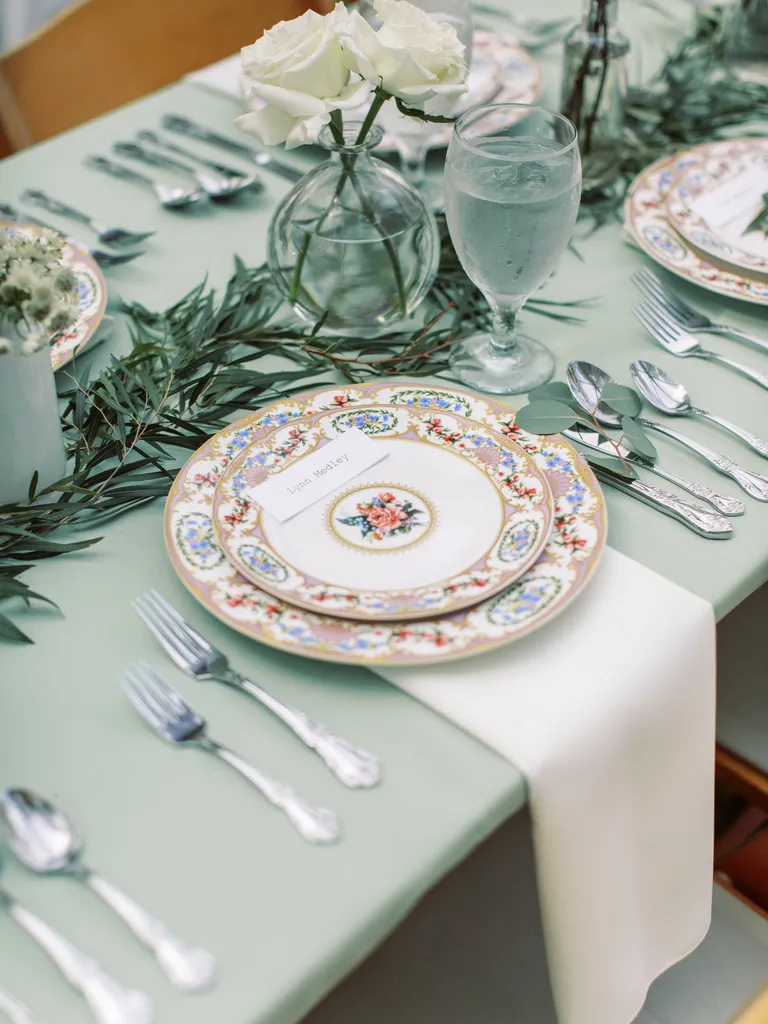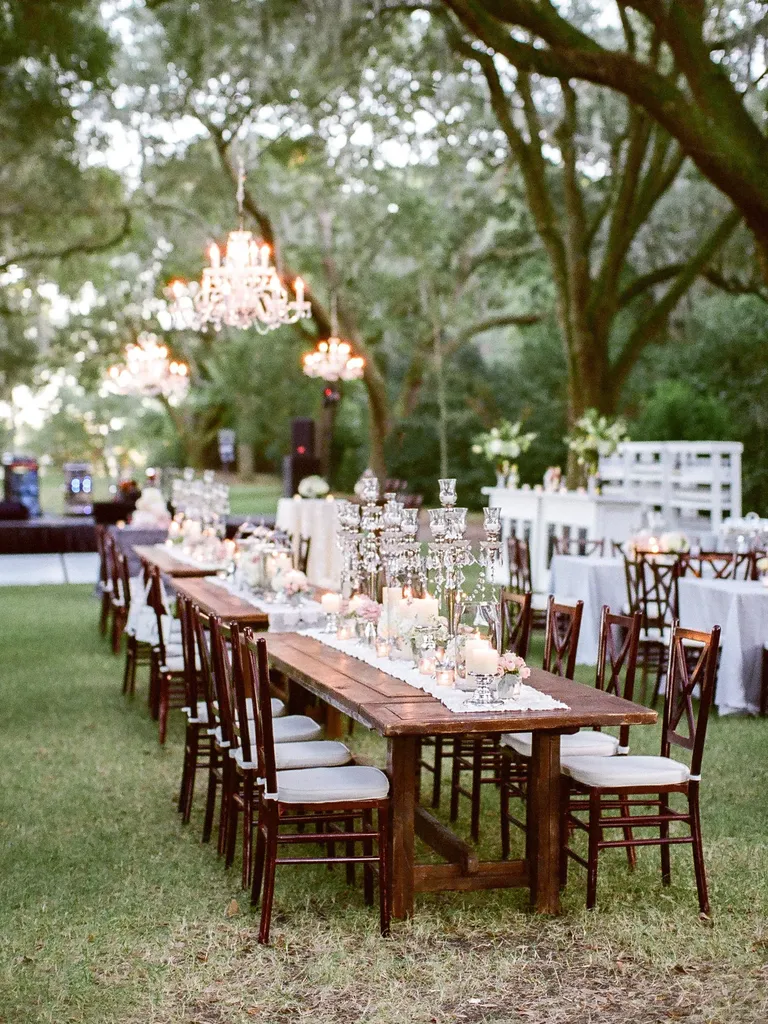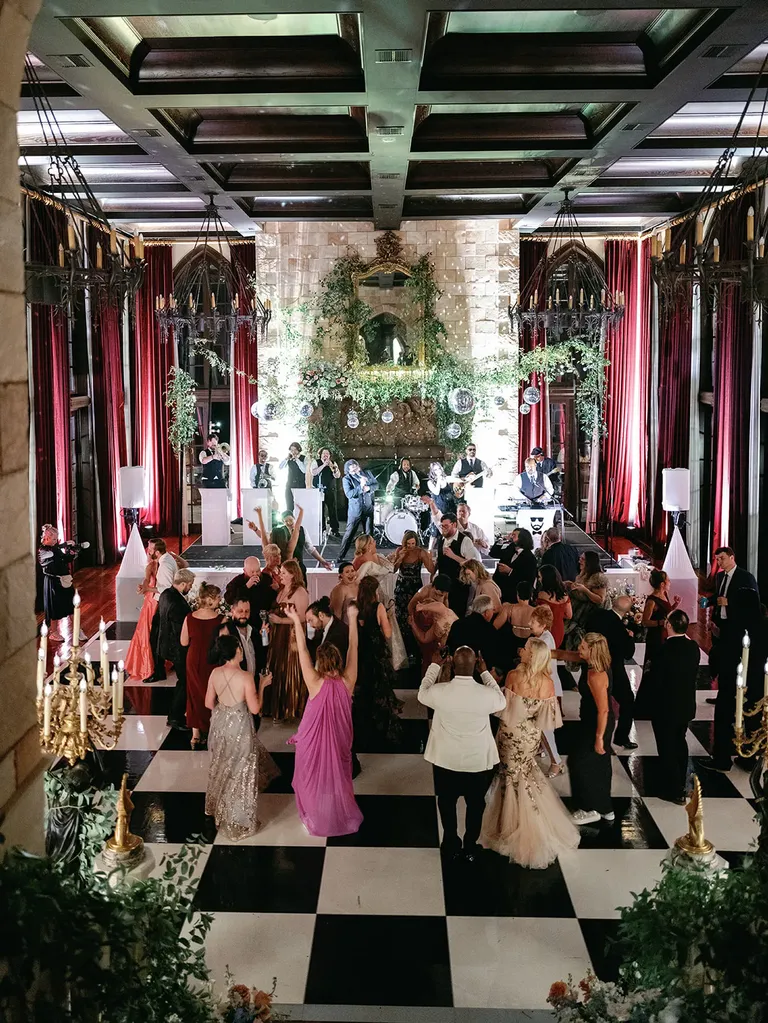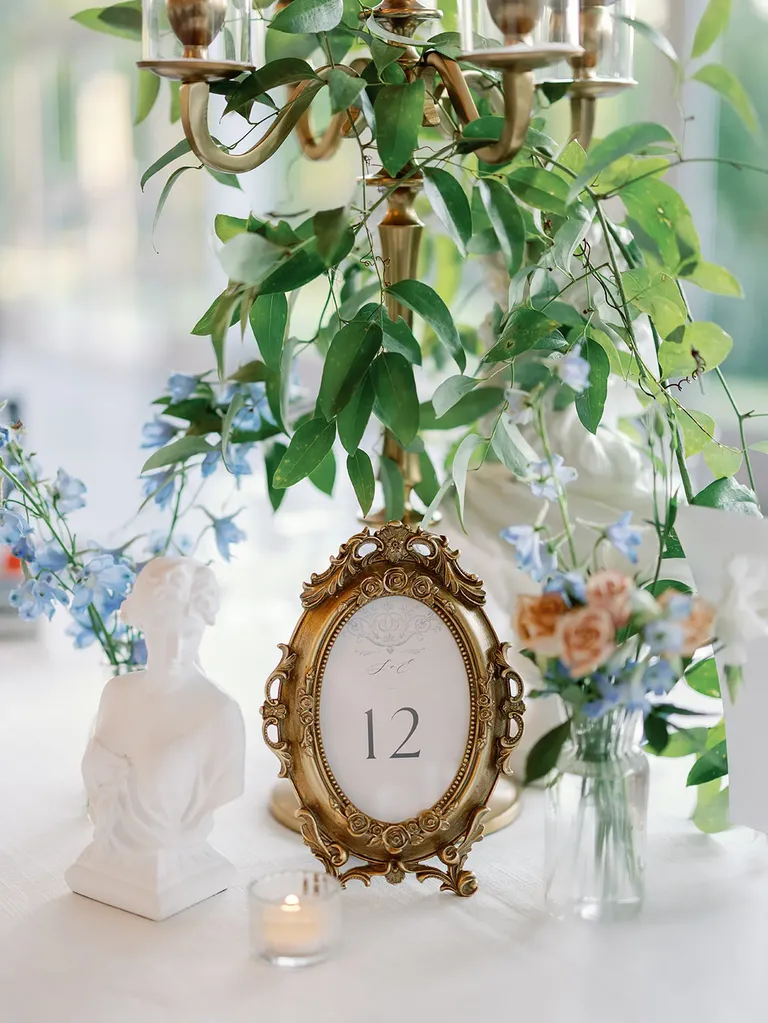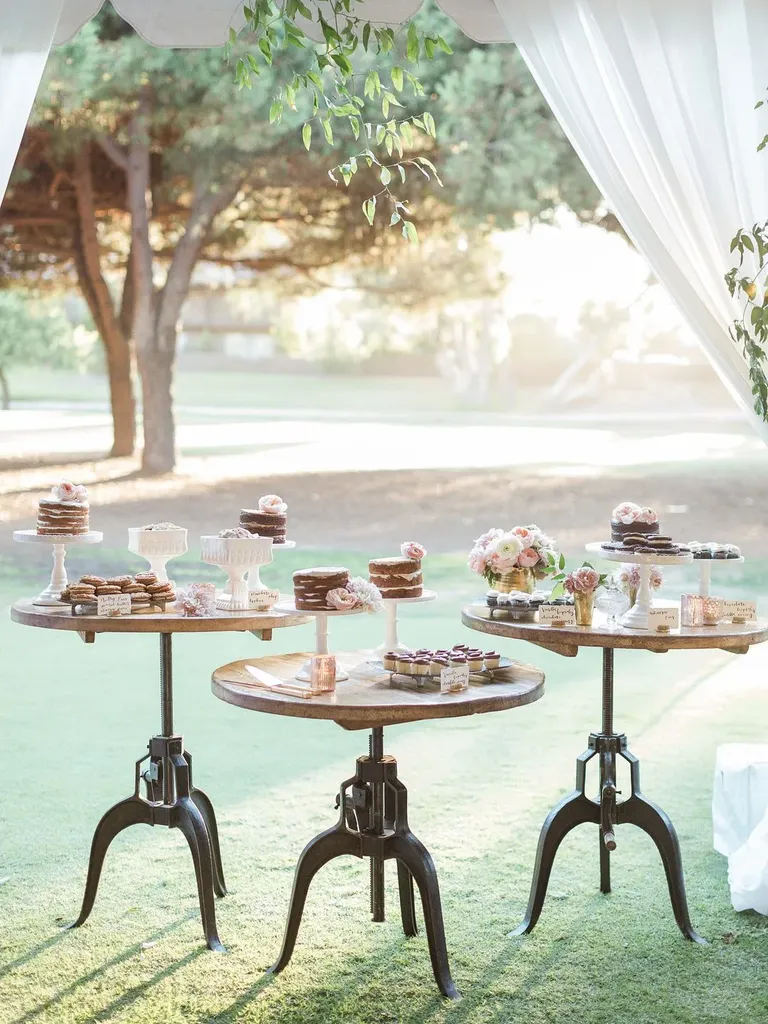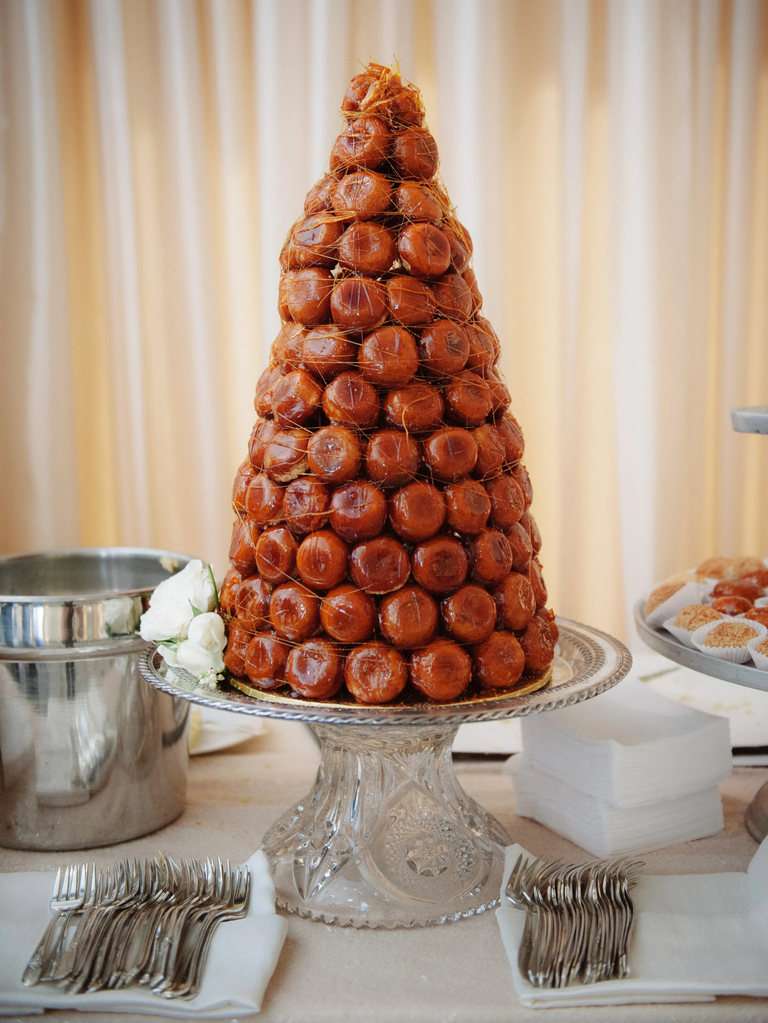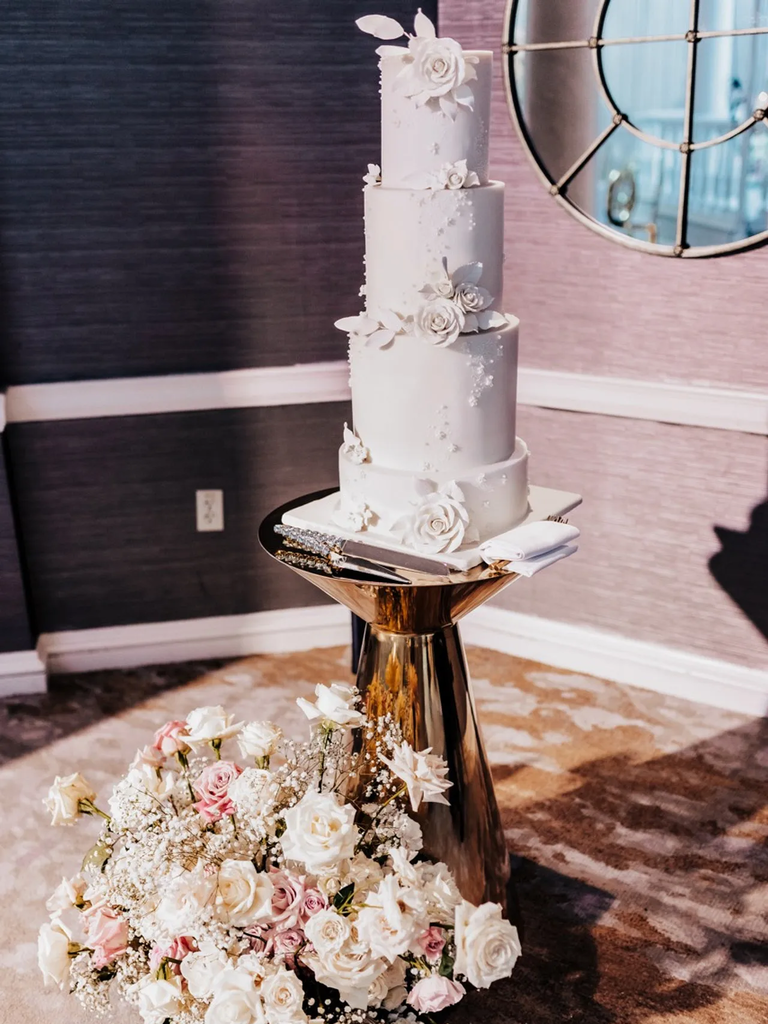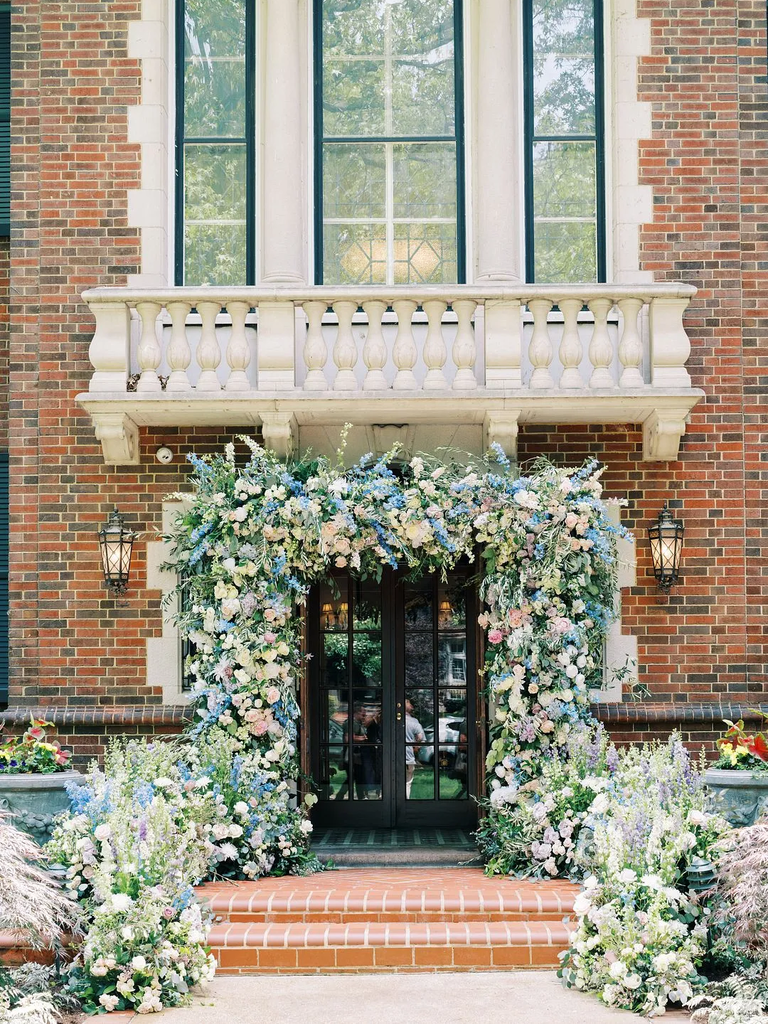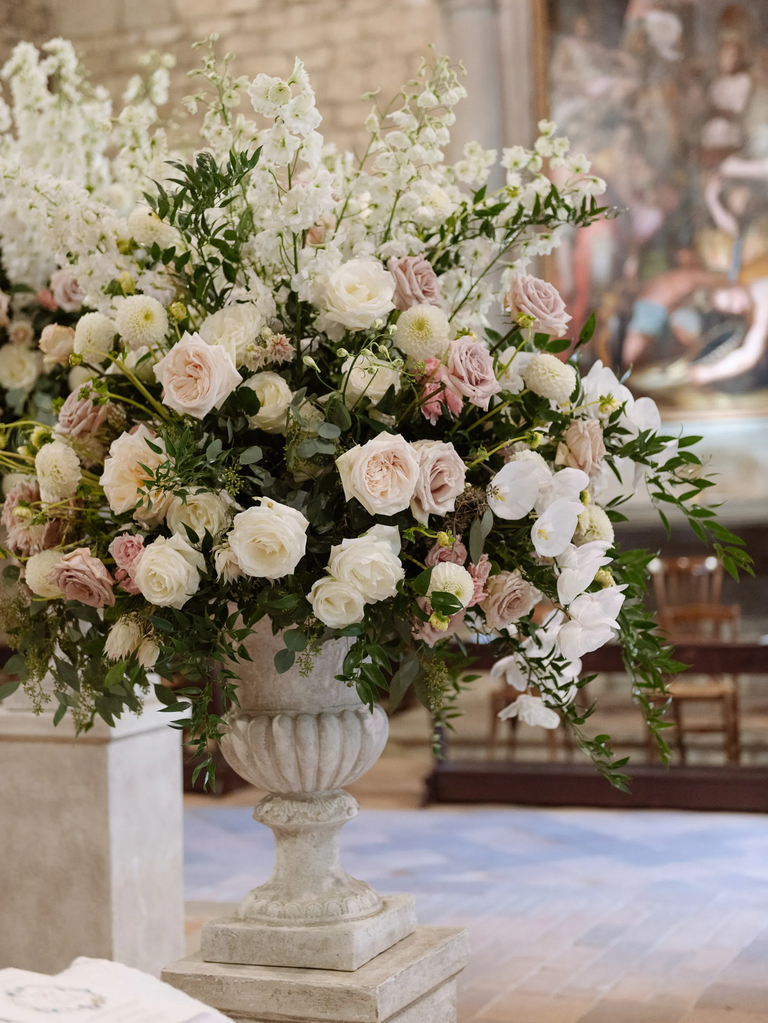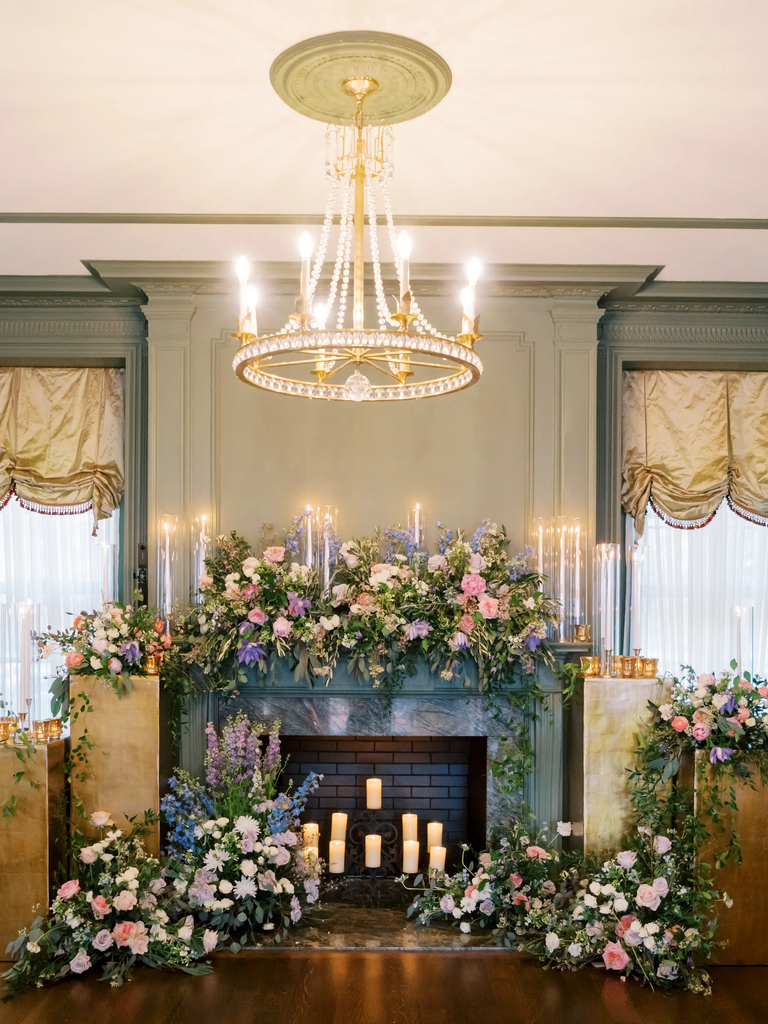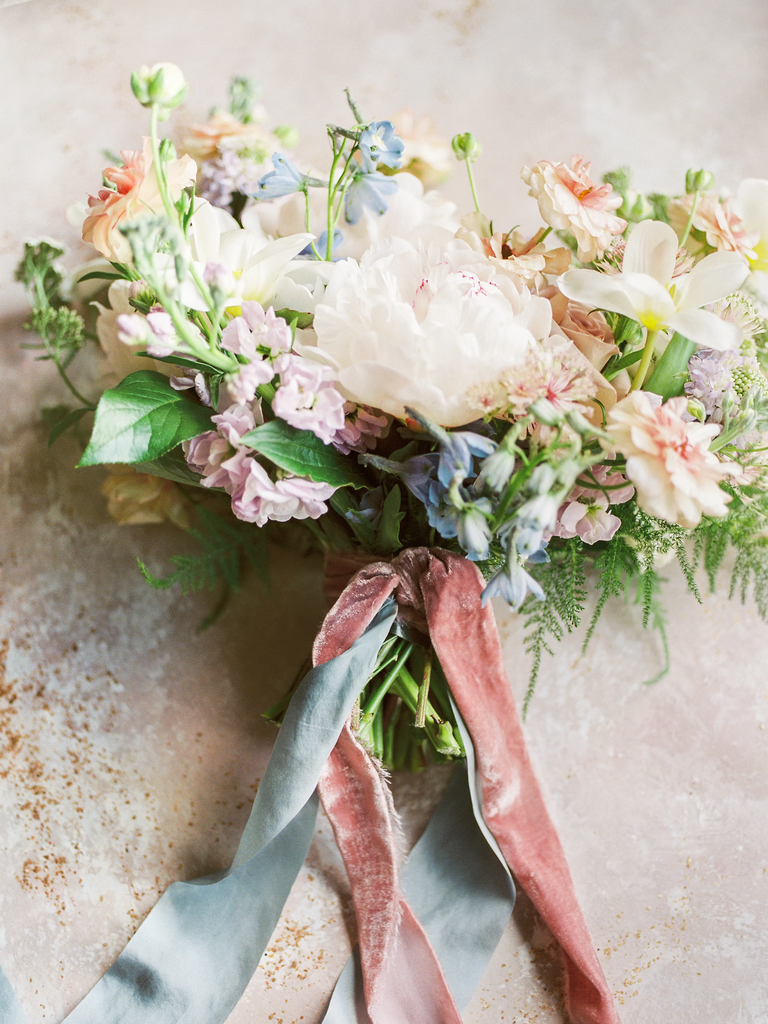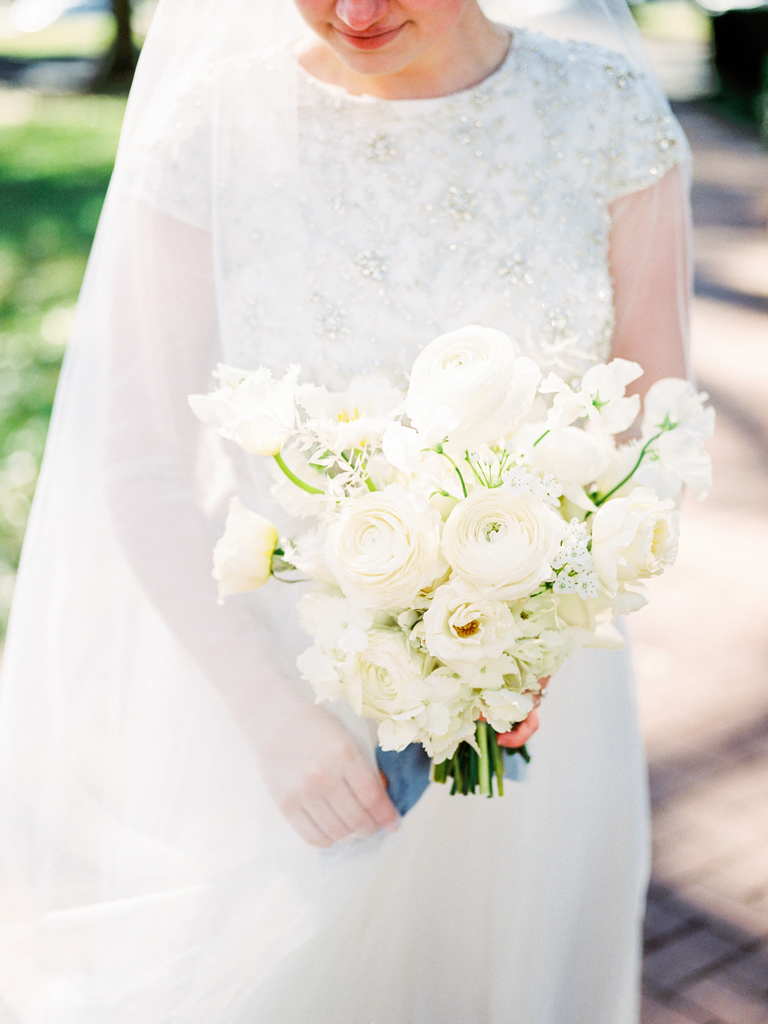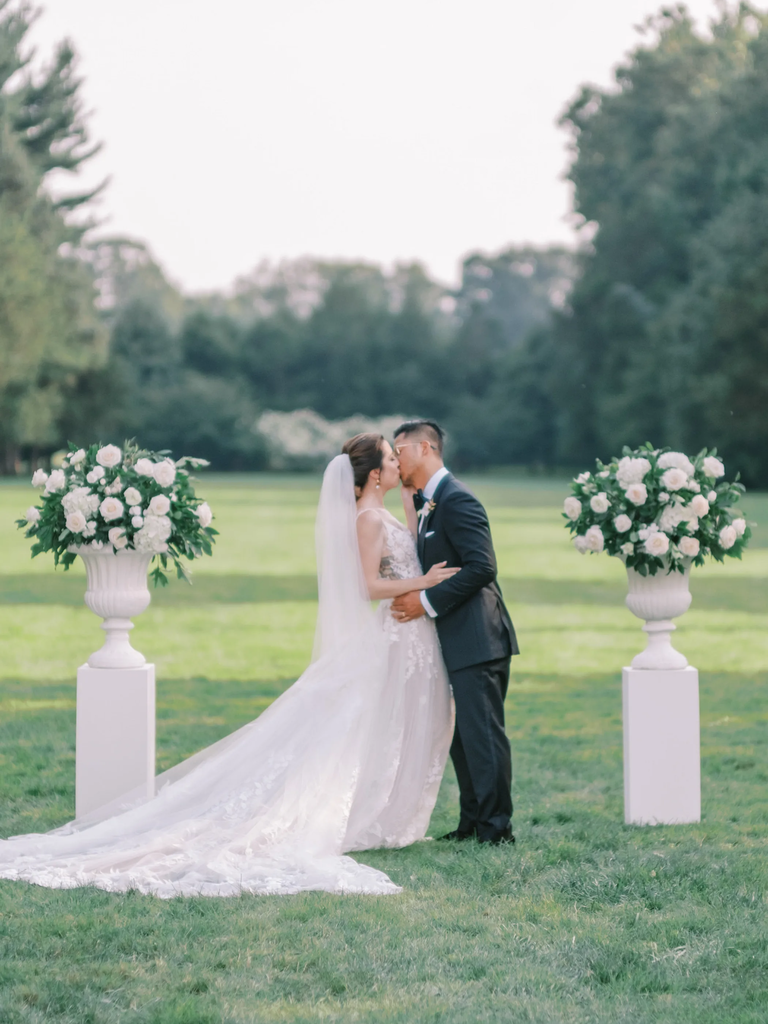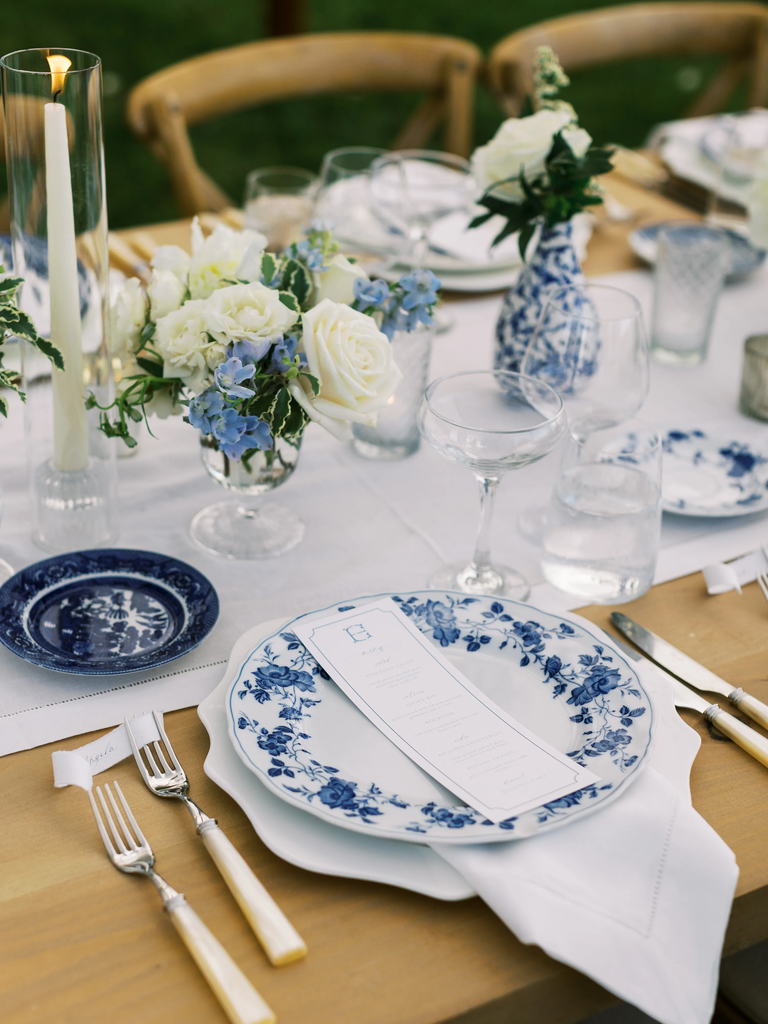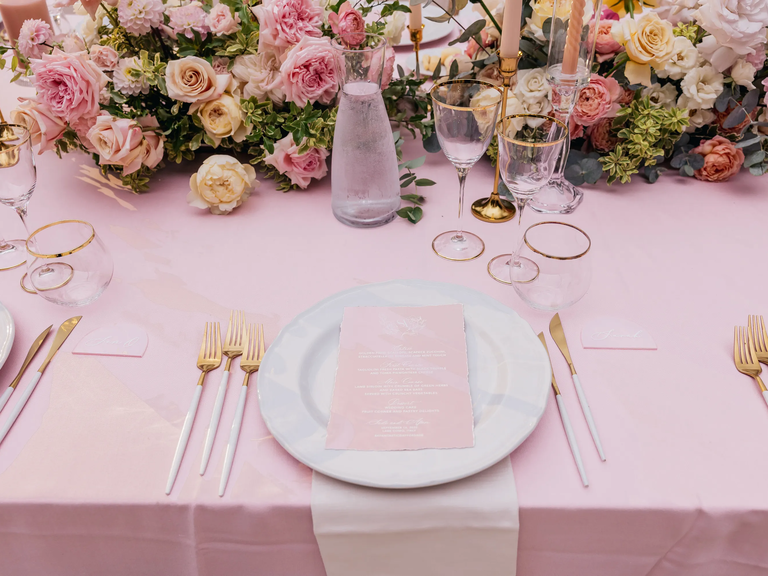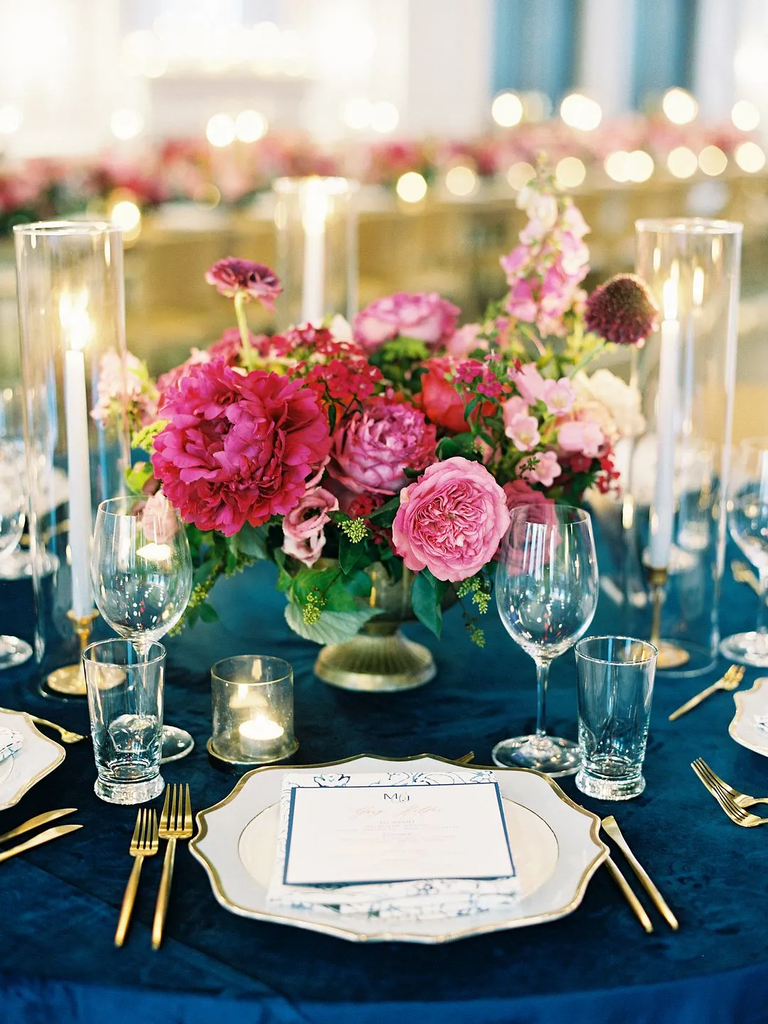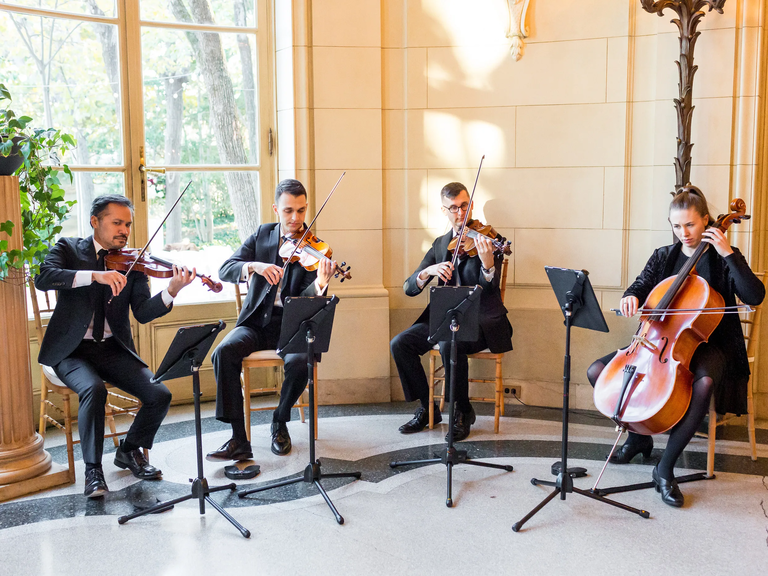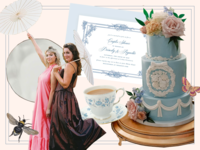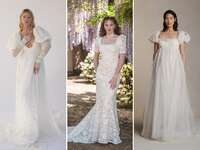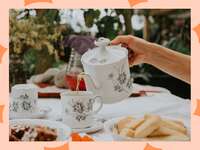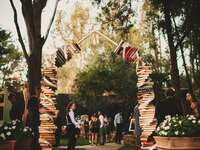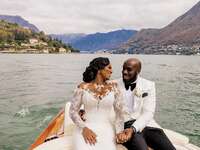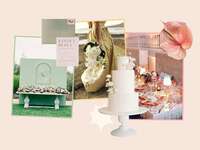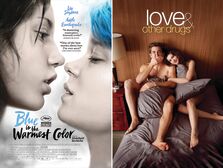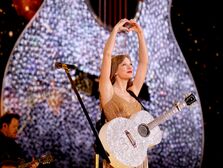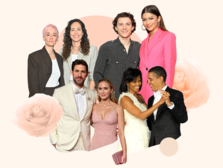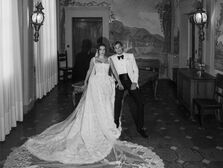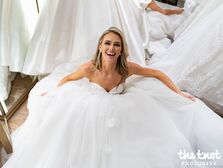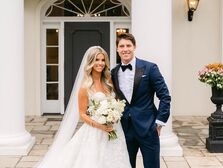30 Bridgerton Wedding Ideas That Evoke Regency Royalty
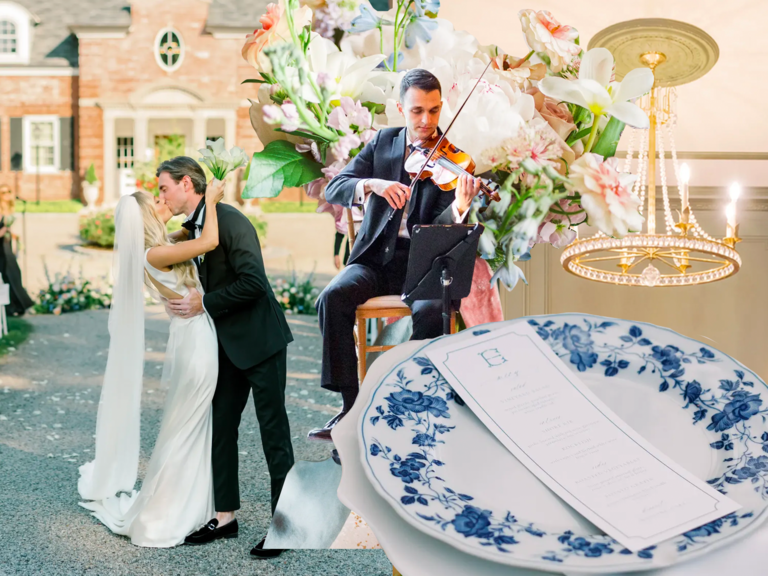
Whether you're most enamored with its candy-colored gowns, stunning historic architecture or spicy enemies-to-lovers plotlines, Netflix's Bridgerton undoubtedly creates a period-drama paradise. And though you can't time travel back to the Regency era to scoop up a hot duke of your own, you can host a Bridgerton wedding inspired by the series' enchanting aesthetic.
Pull off a Bridgerton wedding theme by incorporating iconic decor pieces, color schemes and visual elements into your nuptials that evoke both the English Regency era and a few of the more fanciful choices that make the show a world all its own. And if you need a little help nailing down those details, refer to the expert advice we've gathered from wedding planner Alice Wilkes—who executed the iconic nuptials for the Bridgerton fans that were the lucky winners of the Bridgerton wedding contest.
Below, we've curated a selection of Bridgerton wedding ideas for you to add to your wedding vision board that aptly capture the magic without making your wedding feel like a costume party. (And would ensure your event wouldn't get slandered in Lady Whistledown's Society Papers.)
Bridgerton wedding ideas in this article: Definition | Invitations | Venues | Decor | Cake | Flowers | Music | Colors | Editor's Favorites
What is a Bridgerton-Themed Wedding?

A Bridgerton-style wedding is an affair that takes style cues from the Netflix series in subtle ways, while also incorporating some historic flair. The vibe is elevated and lavish, yet fresh and unstuffy. Hints of the Regency era shine through in the form of lush florals, pastel color schemes, gilded touches and antique-classic decor elements, such as candelabras, crests and china table settings. The overall look feels romantic and joyful, with the undercurrent of intrigue that's so integral to the show. "I think of stately homes, pastel hues, English country gardens, lawn games, creeping wisteria, elaborate floral displays, checkered dance floors, candlelight and candelabras," says Wilkes, who notes that these elements should be included in tandem with personalized details that represent your relationship and suit the aesthetic. "Adding bespoke touches such as personalized calligraphy or a custom crest ensure that the Bridgerton theme translates to your wedding day, so when guests walk into the space they see you as a couple as well as the iconic theme."
Bridgerton Wedding Invitations
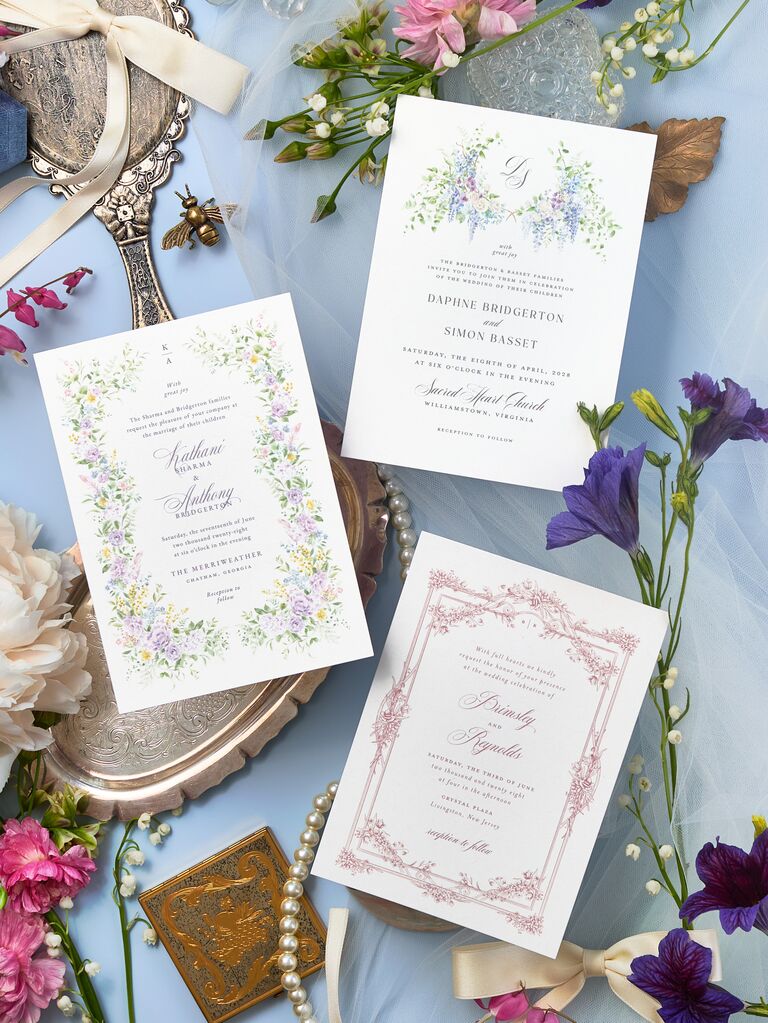
The first step in hosting a wedding fit for the Regency era is sending out invitations that set the mood. Couples, you're in luck. The Bridgerton x The Knot stationery collection is hot off the press, with suites designed to evoke the epic romances of the series. With gilded accents, abundant florals and the fine details you would find carved into an antique picture frame, Bridgerton-style wedding invitations will surely get your guests excited to waltz the night away.
1. Glamorous Garden Wedding Invitations

A luscious floral border flanks either side of this bold wedding invitation, regally framing your special-day details. A couple's monogram crowns the top of the stationery, while the contrast of fluid script with serif fonts adds even more elegance.
2. Antique Toile Wedding Invitations

The elegant antique frame surrounding this invitation feels like it would be right at home in the Bridgerton family's elegant morning room. The clean lines draped in botanicals feel like a gorgeous garden trellis.
3. Crown Monogram Crest Wedding Invitations

This glamorous stationery is fit for Her Majesty The Queen, featuring a gilded monogram crest topped with a crown and anchored by a Bridgerton bee. The colorways feel just as royal, with options for opulent jewel tones and precious pastels.
Bridgerton-Style Wedding Venues
The opulent architecture in the series—from the sprawling estates with moldings like buttercream to the gardens bursting with roses and topiaries that look like they could be outside of a castle—sets the stage for romance to blossom. Your wedding reception venue will do the same. Wilkes says that "a venue that's from the Regency Era and set in beautiful grounds that allows for an outdoor garden ceremony, a grand banquet and an area of dancing the night away" will capture the mood of the Bridgerton society balls for your wedding. To find a venue like this, input your wedding location into The Knot Vendor Marketplace, then filter by the location style of your choice. The Bridgerton wedding venues below will help point you in the right direction.
4. Elegant Estate Venue
Raise your hand if you want to live in the Bridgerton family's dreamy wisteria-draped brick estate. (Dear readers, we'll join you in that.) Opting for an estate wedding venue will offer a similar look and feel. Wilkes notes that a dramatic driveway is definitely a bonus in this kind of venue for a grand entrance moment.
5. Opulent Ballroom Venue
A fancy ballroom bedecked with gilded details and antique charm will definitely evoke the Regency era (even if the space doesn't exactly match the period). Large windows, high ceilings and neoclassical columns will always wow in a Bridgerton wedding venue.
6. Intimate Historic Home Venue
Just because Bridgerton is lavish in style doesn't mean your wedding needs to be a blowout bash. Take cues from the show's more subdued spaces and opt for a reception space that gives more cozy parlor vibes than ballroom excess.
7. Ornate Garden Venue
If you're looking to say "I do" alfresco, an English-inspired garden venue provides the perfect backdrop. An ideal choice would have manicured hedges, lush blooms, neoclassical lawn ornaments and fountains, as well as some paths so your guests can stroll through and enjoy the scenery.
Bridgerton-Inspired Wedding Decor
Just like set styling, decor is what brings a wedding look full circle throughout the ceremony and the reception. And even if an elaborate estate venue isn't in your budget, you can recreate the look of a Bridgerton ballroom with a few thoughtful decor accessories. "Bridgerton is all about the details," says Wilkes. "Bees are a significant part of the series, so why not embroider these onto napkins for that extra special touch…A grand banquet full of candlelight to bring that romantic atmosphere we see on the show will leave guests mesmerized."
8. Flickering Candelabras
We've seen gold-and-crystal candelabras bedeck tables and other surfaces to illuminate the opulent parties that take place throughout the series. Incorporating one into your Bridgerton wedding decor is a sure-fire way to set the right mood.
9. Rich Patterned Textiles
Everything from table linens, to wallpaper, to furniture upholstery was adorned with opulent textiles in upper-crust Regency England. Opting for a toile pattern or a take on damask for your wedding textiles will evoke luxurious elegance.
10. Floral Fine China
The Regency period focused heavily on all things ornate and artistic, which is why a prettily patterned place setting is the perfect accent.
11. Outdoor Suspended Chandeliers
The courtyard ball scene in season one, episode eight lives rent-free in our heads—the lush blooms, the sound of the fountain trickling in the background—it's pure magic. And one of the most interesting touches are the suspended crystal chandeliers. This would be an ethereal touch to any alfresco Bridgerton bash.
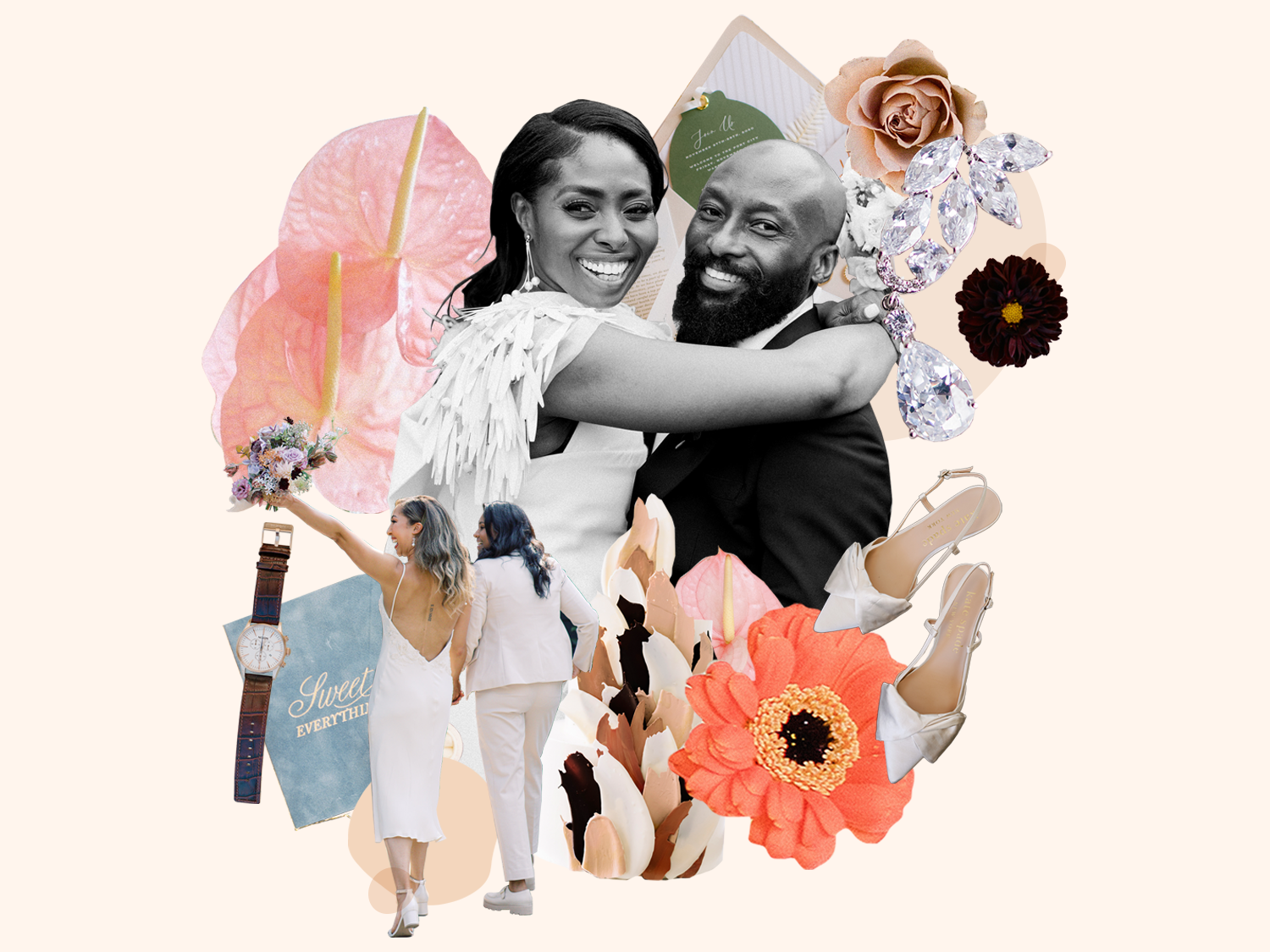


12. Black and White Checkered Dance Floor
Checkered floors like this have hosted many waltzing feet throughout the series, and it would be an elegant touch to your affair. You can look for a historic property that has one already, or find a company that offers lock-together flooring in this style (which would work well for outdoor receptions, too).
13. Neoclassical Decor Elements
Incorporating the types of tchotchkes found around a Regency estate into your centerpieces and tablescapes will feel much more intriguing to guests than flowers and candles alone. This Grecian bust is giving secret, unexpected late-night rendezvous in the library vibes.
14. Pedestal Serving Dishes
Have you ever noticed when the Bridgerton characters are indulging in tea pastries or other snacks that they're always served elevated? Pedestal-style serving dishes (plates with a column-like base like a cake stand would have) will add some English elegance to your dessert display.
Bridgerton Wedding Cake Ideas
Who could forget the five-tier confection of perfection that was the season-one wedding cake? We can't. These wedding cake ideas (and unique cake alternatives) nod to the show in both style and substance.
15. Powder Blue and White Floral Wedding Cake
The gorgeous design of this cake mimics an ornate Regency room perfectly, with thick white ribbons and floral garlands against a pale blue background. The fresh flowers add to the English garden feel.
16. Crocembouche Wedding Cake
A croquembouche, a classic French wedding "cake," topped a table during one of the Bridgerton parties, so it's a natural choice for couples who want to pay homage to the series in a different way. For an extra-festive touch, you can sprinkle edible flowers in between the pastries.
17. All-White Showstopper Wedding Cake
Pay homage to the show's famous wedding cake with a white, elaborate confection. It'll make a show-stopping statement, but still feel classic and timeless.
Bridgerton Wedding Flower Ideas
Every Bridgerton ball is draped in the most lush florals, and your Regencycore wedding inspired by the series should be no different. Below, you'll find unique flower ideas for ceremony blooms, reception florals and more. "Homegrown British florals is a way to make it seem as if your wedding has just been 'picked' from any Bridgerton garden," says Wilkes, who also mentions that roses, wisteria and wallflowers are thematic choices.
18. Wisteria Ceremony Arch
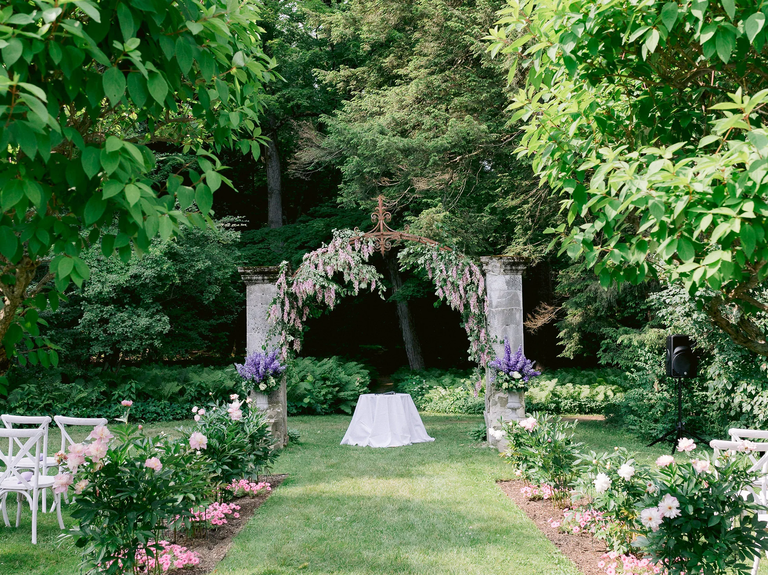
Wisteria is the most iconic flower in the show, so the cascading purple blossoms are a must according to Wilkes. This arch mimics the gorgeous wisteria-threaded gate entrance outside of the Bridgerton estate.
19. Abundant Floral Arch
Decorate any doorway with a lush arch of flowers so your guests will know they're in for an elegant affair. Florals placed like this have made an appearance throughout the show, too.
20. Overflowing Urns
Neoclassical urns like these would be the flower vessels of choice in the Regency era. Add one anywhere your ceremony or reception might need some extra aesthetic appeal.
21. Mantlepiece Arrangement
Another floral arrangement we've seen bedeck the balls in Bridgerton, horizontal bushels of blooms feel magical when draped along mantelpieces (if your venue has a fireplace) or any other shelf or long surface.
22. Pastel Ribbon Bouquet
The raw-edged ribbons binding this bouquet together feel equal parts historic and romantic. Plus, the pale-pink peonies were popular wedding flowers in the Regency period.
23. All-White Small Bouquet
This bouquet would be suitable for any of the elegant betrothed in the series. Regency-era bouquets were much smaller than the cascading variety we see in modern day, and the all-white color scheme would've matched the season-one wedding flowers.
24. Flanking White Arrangements
Especially if you're going the garden nuptials route, we love a pair of elegant pedestal urns filled with white blooms marking the beginning or end of your aisle—or even as a way to frame the gorgeous view of your venue.
How to Choose Bridgerton Wedding Music
When it comes to choosing Bridgerton songs for your wedding, the task is likely easier than you think. The series' soundtrack mainly consists of string quartet covers of popular songs, such as "Wrecking Ball," by Miley Cyrus, and "thank u, next," by Ariana Grande. You can have your DJ play these instrumental wedding songs straight from the soundtrack, or hire a quartet of your own to perform them live. For when you really want that historic feel, you can also play songs that would've been popular in the Regency period, like those from classic composers like Beethoven, Rossini, Liszt and Mendelssohn. (These scores might be a little less danceable, so we'd recommend relegating them to before the ceremony, or during dinner or cocktail hour).
Bridgerton Wedding Colors
Color is integral in the Bridgerton universe, delineating between families and evoking different themes. Whether your vibe is more Bridgerton blue or the vibrant tones of the Featheringtons, you have options when it comes to deciding on your wedding hues for a Bridgerton wedding reception.
25. Blue and White Color Scheme
You'll fit right in with the eponymous family with a wedding bedecked in blue tones. (Fun fact: Blue and white chinoiserie china patterns became popular in the late 18th century and—with the continued rise of Asian art motifs throughout the Regency period—it would be fairly true to the time.)
26. Pink and Green Color Scheme
Glean some wedding color inspiration from Her Majesty The Queen's estate with a pink, green and gold palette. It's equal parts royal, opulent and whimsical (just like the iconic character).
27. Jewel Tone Color Scheme
The Sharma family is always sporting rich jewel-toned garments, and this sumptuous palette extends well into all aspects of your wedding. Deep pinks, purples and teals make an especially bold statement.
Editor's Picks: Bridgerton Wedding Ideas
We've covered all of the biggest categories to help you create the Bridgerton-inspired wedding of your dreams, but here are a few more special touches that'll truly make for a regal Regency affair.
28. Live String Quartet
"Adding a Bridgerton-inspired string quartet as the soundtrack to the day is a way to tie in the iconic atmosphere created in the show," says Wilkes. It's the most magical way to bring the Bridgerton soundtrack to life during your ceremony or cocktail hour.
29. Macaron Tower
Another eye-catching dessert we've seen grace our screens in the series, a macaron tower will make a whimsical addition to your sweets display. It's also a lovely addition to a bridal shower inspired by the show.
30. Regency-Inspired Portraits
We know modern wedding photography is all about capturing the moment, but there's something to be said about the elegance of a Regency-inspired posed photo. You can shoot one with your spouse or your wedding party. (Bonus points if you have a historic, cotton candy-hued backdrop and Bridgerton-friendly wedding dress.)

